Monthly Archives: December 2016


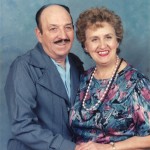 On the last day of the year, many people are busily planning the festivities for the evening. Others are contemplating the coming year and how they might make it better than the last. These are things that I am doing too, but I am also looking back on the year that is quickly coming to a close. Every year has it’s good things and it’s bad things. This year is no different. As the year began, I was recovering from a broken shoulder, while my niece, Chantel Balcerzak was getting used to her new role as grandma to little Izabella Siara Harman. February brought a promotion for my brother-in-law, Chris Hadlock to Lieutenant with the Casper Police Department, and then the sad 1st anniversary of our mother’s passing. I couldn’t believe she had been gone a year already. March brought the 41st anniversary of my marriage to Bob Schulenberg, and the love continues to grow. It also brought the purchase of a home in northwestern Washington for our daughter, Amy Royce and her husband, Travis.
On the last day of the year, many people are busily planning the festivities for the evening. Others are contemplating the coming year and how they might make it better than the last. These are things that I am doing too, but I am also looking back on the year that is quickly coming to a close. Every year has it’s good things and it’s bad things. This year is no different. As the year began, I was recovering from a broken shoulder, while my niece, Chantel Balcerzak was getting used to her new role as grandma to little Izabella Siara Harman. February brought a promotion for my brother-in-law, Chris Hadlock to Lieutenant with the Casper Police Department, and then the sad 1st anniversary of our mother’s passing. I couldn’t believe she had been gone a year already. March brought the 41st anniversary of my marriage to Bob Schulenberg, and the love continues to grow. It also brought the purchase of a home in northwestern Washington for our daughter, Amy Royce and her husband, Travis.
April brought my 60th birthday, although I felt no upset by that. I have always felt that the key is to enjoy the age you are at, and I will continue to do so. May 5th brought the sad reminder that my father-in-law, Walt Schulenberg has been in Heaven for 3 years now. May also brought the graduation of my grandson, Chris 

 Petersen from the Culinary School at Sheridan College. It’s hard for me to believe that his college years are so quickly over. My daughter, Amy made the trip to Wyoming to attend the graduation, and it was so good to see her again…even if it was for such a short time. June brings the birthdays of my daughters, and these days it’s a little bit bittersweet, because Amy is so far away. My oldest daughter, Corrie Petersen and her husband, Kevin went camping for her birthday, so we joined them on Casper Mountain for a birthday evening. We all had a lovely time. I just wish Amy’s family could have been there too.
Petersen from the Culinary School at Sheridan College. It’s hard for me to believe that his college years are so quickly over. My daughter, Amy made the trip to Wyoming to attend the graduation, and it was so good to see her again…even if it was for such a short time. June brings the birthdays of my daughters, and these days it’s a little bit bittersweet, because Amy is so far away. My oldest daughter, Corrie Petersen and her husband, Kevin went camping for her birthday, so we joined them on Casper Mountain for a birthday evening. We all had a lovely time. I just wish Amy’s family could have been there too.
July brought with it one of the biggest changes of my life, when my husband, Bob Schulenberg retired from the City of Casper. It was a day of rejoicing, because he had been ready to retire for some time now. July also brought with it, another loss…of sorts, when my granddaughter, Shai Royce moved to Washington to be near her family. It was hard on me, but I knew it was best for her, because she had been so lonely for her parents and her brother, Caalab. While we continue to miss her and the rest of her family, we are happy, because they are happy. July also brought wedding bells for my nephew, Garrett Stevens as he married his best friend, 

 Kayla Smiley. August brought a beautiful new addition to our family when my niece Jessi Sawdon and her husband, Jason welcomed daughter Adelaide Ione to our family. Addi was named after Jessi’s great grandmother and Jessi’s grandmother, my mom, Collene Ione Spencer. In September, my sister-in-law, Brenda Schulenberg, had skin removal surgery after losing 350 pounds. She had a bleeding issue, but she is doing well now, and we are very proud of her. September also brought with it the sadness of loss, as we said goodbye to Bob’s aunt, Linda Cole. Hers was a shock, because her passing was so unexpected.
Kayla Smiley. August brought a beautiful new addition to our family when my niece Jessi Sawdon and her husband, Jason welcomed daughter Adelaide Ione to our family. Addi was named after Jessi’s great grandmother and Jessi’s grandmother, my mom, Collene Ione Spencer. In September, my sister-in-law, Brenda Schulenberg, had skin removal surgery after losing 350 pounds. She had a bleeding issue, but she is doing well now, and we are very proud of her. September also brought with it the sadness of loss, as we said goodbye to Bob’s aunt, Linda Cole. Hers was a shock, because her passing was so unexpected.
October found my grandson, Josh Petersen actively pursuing his dream of becoming a firefighter as he took Boces classes to get a head start on the Fire Science degree he needs. It also found us celebrating with my brother-in-law, Chris Hadlock, as he became the Peace Officer of the year. November brought an unusual Thanksgiving as Bob and I traveled to Ferndale, Washington to spend the holiday with Amy’s family, in a week that went by way too fast. Then, as we were on our way home, we found out about the passing of my cousin, Shirley Cameron’s husband, Shorty’s passing…another shocking passing that was very unexpected. December 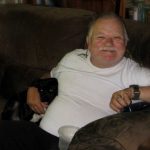

 brought the sad reminder that my dad, Allen Spencer had been in Heaven now for 9 long years. That seems impossible to me. December also brought college graduation for my niece, Michelle Stevens, who will now start her teaching career. This was most certainly a year of ups and downs, but with the coming new year, comes the hope for a great future.
brought the sad reminder that my dad, Allen Spencer had been in Heaven now for 9 long years. That seems impossible to me. December also brought college graduation for my niece, Michelle Stevens, who will now start her teaching career. This was most certainly a year of ups and downs, but with the coming new year, comes the hope for a great future.
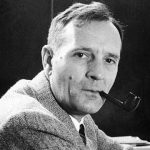
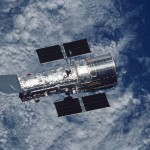 It is so easy to focus on our own little planet, or our own little space, but the reality is that outside of our atmosphere, there is a huge space that makes us look like a speck of dust…if that. In centuries past, people could see the sun and the stars, and I suppose they considered the fact that there might be something else out there, but since they really had no way of viewing it better than using the naked eye, they just thought that it was what it was…somewhat like a curtain with holes poked into it, and they really didn’t ever expect to see anything more. Still, somewhere along the way, someone thought it might be possible to see further into the sky that just the few stars that were visible. Inventions came about to aid the people in seeing into the great beyond.
It is so easy to focus on our own little planet, or our own little space, but the reality is that outside of our atmosphere, there is a huge space that makes us look like a speck of dust…if that. In centuries past, people could see the sun and the stars, and I suppose they considered the fact that there might be something else out there, but since they really had no way of viewing it better than using the naked eye, they just thought that it was what it was…somewhat like a curtain with holes poked into it, and they really didn’t ever expect to see anything more. Still, somewhere along the way, someone thought it might be possible to see further into the sky that just the few stars that were visible. Inventions came about to aid the people in seeing into the great beyond.
One man who had a vision to be able to see what was out there, was Edwin Hubble. Edwin wanted to learn about space from the time he was a young boy. He said, “I knew that even if I were second or third rate, it was astronomy that mattered.” He knew that he simply couldn’t do anything else. That kind of 
 determination makes a person great, and he was determined. Hubble’s work was something his father didn’t understand, and didn’t want him to do, in fact making him promise to be a lawyer. Hubble tried, but his heart just wasn’t in it. He also worked as a teacher of Spanish, Physics, Mathematics, and coached basketball. His popularity as a teacher is recorded in the school yearbook dedicated to him: “To our beloved teacher of Spanish and Physics, who has been a loyal friend to us in our senior year, ever willing to cheer and help us both in school and on the field, we, the class of 1914, lovingly dedicate this book.”
determination makes a person great, and he was determined. Hubble’s work was something his father didn’t understand, and didn’t want him to do, in fact making him promise to be a lawyer. Hubble tried, but his heart just wasn’t in it. He also worked as a teacher of Spanish, Physics, Mathematics, and coached basketball. His popularity as a teacher is recorded in the school yearbook dedicated to him: “To our beloved teacher of Spanish and Physics, who has been a loyal friend to us in our senior year, ever willing to cheer and help us both in school and on the field, we, the class of 1914, lovingly dedicate this book.”
While Edwin Hubble’s father may have thought his son had made a terrible mistake, and that he was even one can short of a six-pack, Edwin Hubble knew that there was more to see out there, and he simply couldn’t sit idly by and miss God’s big show. In October 1923 he spotted what he first thought was a nova star flaring up dramatically in the M31 “nebula” in the constellation of Andromeda. After careful examination of photographic plates of the same area taken previously by other astronomers, including his greatest scientific rival, Harlow 
 Shapley, who thought that the Milky Way was the end of the universe, he realized that it was a Cepheid star. On December 29, 1924, all of his hard work came to fruition, when he made another startling find…all galaxies seemed to be receding from us with velocities that increased in proportion to their distance from us…a relationship now known as Hubble’s Law. On this day, December 30, 1924, Edward Hubble was finally able to make the announcement that would make his a household name…that the universe was not static, but ever expanding and that there were many other galaxies out there.
Shapley, who thought that the Milky Way was the end of the universe, he realized that it was a Cepheid star. On December 29, 1924, all of his hard work came to fruition, when he made another startling find…all galaxies seemed to be receding from us with velocities that increased in proportion to their distance from us…a relationship now known as Hubble’s Law. On this day, December 30, 1924, Edward Hubble was finally able to make the announcement that would make his a household name…that the universe was not static, but ever expanding and that there were many other galaxies out there.
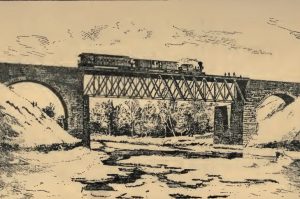 Through the centuries, new designs were developed to build things we needed. As the railroad moved across the nation, track laying came across deep gorges and flat plains. Of course, the flat plains were easy to deal with, and trains could simply go around any hills in the area, but the rivers and gullies were a bigger problem. They needed bridges, and so Charles Collins and Amasa Stone jointly designed a bridge to be used at Ashtabula, Ohio. It was the first Howe-type wrought iron truss bridge built. Collins was worried about the bridge, thinking that it was “too experimental” and needed further evaluation. Nevertheless, higher powers prevailed, and the bridge was built. Collins had been right to be concerned. The bridge lasted just 11 years before it collapsed.
Through the centuries, new designs were developed to build things we needed. As the railroad moved across the nation, track laying came across deep gorges and flat plains. Of course, the flat plains were easy to deal with, and trains could simply go around any hills in the area, but the rivers and gullies were a bigger problem. They needed bridges, and so Charles Collins and Amasa Stone jointly designed a bridge to be used at Ashtabula, Ohio. It was the first Howe-type wrought iron truss bridge built. Collins was worried about the bridge, thinking that it was “too experimental” and needed further evaluation. Nevertheless, higher powers prevailed, and the bridge was built. Collins had been right to be concerned. The bridge lasted just 11 years before it collapsed.
On December 28, 1876, a Lake Shore and Michigan Southern Railway train…the Pacific Express left New York. It struggled along through the drifts and the blinding storm. The train was pulling into Ashtabula, Ohio, shortly before 8:00pm on December 29, 1876, several hours behind schedule. The eleven cars were a heavy burden to the two engines. The leading locomotive broke through the drifts beyond the ravine, and rolled on across the bridge at Ashtabula at less than ten miles an hour. The head lamp could barely be seen because the air was thick with the driving snow. The leading engine reached solid ground, and the engineer had just given it steam…when something in the undergearing of the bridge snapped.
What followed was a horror beyond horrors…not only for the victims, but for the rescuers as well…maybe even more so for the rescuers. As the bridge crumbled beneath the weight of the train, the train and its 159 passengers fell 70 feet into the river below. More than 90 people, passengers and crew, were killed when the train hit the river and ignited into a huge ball of flames. Only the lead engine escaped the fall. As the bridge fell, the engineer gave it a quick head of steam, which tore the draw head from its tender, and the liberated engine shot forward and buried itself in the snow. The engineer escaped with a broken leg. The proportions of the Ashtabula horror are still only approximately known. Daylight, brought with it the opportunity to find and count the saved. It also revealed the fact that two out of every three passengers on the train were lost. Of the 160 passengers who the injured conductor reports as having been on board, fifty nine were found or accounted for as surviving. The remaining 100, burned to ashes or shapeless lumps of charred flesh, were lying under the ruins of the bridge and train. Every possible element of horror was there. First came the crash of the bridge, the agonizing moments of suspense as the seven laden cars plunged down their fearful leap to the icy riverbed. Then the fire, that devoured all that had been left alive by the crash. The water that gurgled up from under the broken ice brought with it another form of death. And finally, the biting blast of freezing air filled with snow, that froze those who had escaped the water and fire.
For the rescuers, the horror had just begun. I can’t think of anything worse than seeing those bodies after they were horribly mangled, drowned, and burned…some beyond recognition, some completely cremated. The number of persons killed cannot be accurately stated, because it is not known exactly how many there were on the train. It is supposed that some of the bodies were entirely consumed in the flames, as well. The official list of those killed and those who have died of their injuries, gives the number as fifty five, but it is suspected to be somewhat higher. There is no death list to report…and in fact, there can be none. There are no remains that can ever be identified. The three charred, shapeless lumps recovered were burned beyond recognition. For the rest, there are piles of white ashes in which were found the crumbling particles of bones. In other places masses of black, charred debris, half under water, which may contain fragments of bodies, but nothing that resembled a human body. It is thought that there may have been a few corpses under the ice, as there were women and children who jumped into the water and sank, but none have been recovered. Periodically, as people began looking for people that were missing around the country, and they were able to place them, as possibly on the train, more supposed victims have been identified…at least there is the possibility that they were a victim.
The Ashtabula, Ohio Railroad Disaster, often referred to simply as the Ashtabula Disaster or the Ashtabula Horror, was one of the worst railroad disasters in American history. The event occurred just 100 yards from the railroad station at Ashtabula, Ohio. It’s topped only by the Great Train Wreck of 1918 in Nashville, Tennessee. Charles Collin, the chief engineer, who knew as few men did the defects of that bridge, but was powerless to repair them, had been listening for this very crash for years. Collins, locked himself in his bedroom and shot himself while the inquest was in progress rather than tell the world all he believed he knew. Collins was found 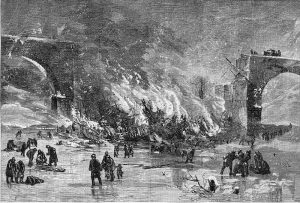 dead in his bedroom of a gunshot wound to the head. He had tendered his resignation to the Board of Directors the previous Monday. Collins was believed to have committed suicide out of grief and feeling partially responsible for the tragic accident, however, a police report at the time suggested the wound had not been self inflicted. Documents discovered in 2001 and an examination of Collins’ skull suggest that he had indeed been murdered. Amasa Stone committed suicide seven years later after experiencing financial difficulties with some foundries he had interests in, suffering from severe ulcers that kept him from sleeping, and scorn from the public over the disaster.
dead in his bedroom of a gunshot wound to the head. He had tendered his resignation to the Board of Directors the previous Monday. Collins was believed to have committed suicide out of grief and feeling partially responsible for the tragic accident, however, a police report at the time suggested the wound had not been self inflicted. Documents discovered in 2001 and an examination of Collins’ skull suggest that he had indeed been murdered. Amasa Stone committed suicide seven years later after experiencing financial difficulties with some foundries he had interests in, suffering from severe ulcers that kept him from sleeping, and scorn from the public over the disaster.


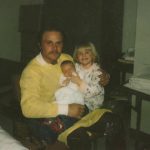 My second cousin, Brian Schumacher and his wife, Lisa are two amazing people. Over the years of their marriage, they have been blessed with a beautiful group of children…but not in exactly the way you might expect. Brian’s first marriage, when he was 19 years old, gave him his first child…a daughter named Angie Marie was born January 8th, 1976, but that marriage ended in divorce. Brian married Lisa Basley on August 4, 1979. Their marriage was first blessed with a son, Brian Leslie born on February 8, 1980. Then, on May 20th, 1981 Lisa gave birth to another son, Nicholas Lee, and on June 29th, 1982, a daughter, Elizabeth Ann. Hemorrhaging during baby Elizabeth’s delivery brought with it the need for a hysterectomy for Lisa at age 29. She and Brian thought their days of having babies were over. They were quite sad about that because they had wanted more children, but God had a different plan for them.
My second cousin, Brian Schumacher and his wife, Lisa are two amazing people. Over the years of their marriage, they have been blessed with a beautiful group of children…but not in exactly the way you might expect. Brian’s first marriage, when he was 19 years old, gave him his first child…a daughter named Angie Marie was born January 8th, 1976, but that marriage ended in divorce. Brian married Lisa Basley on August 4, 1979. Their marriage was first blessed with a son, Brian Leslie born on February 8, 1980. Then, on May 20th, 1981 Lisa gave birth to another son, Nicholas Lee, and on June 29th, 1982, a daughter, Elizabeth Ann. Hemorrhaging during baby Elizabeth’s delivery brought with it the need for a hysterectomy for Lisa at age 29. She and Brian thought their days of having babies were over. They were quite sad about that because they had wanted more children, but God had a different plan for them.
Brian got saved in 1981, while working as a track layer on the railroad. A friend started telling him about Jesus and Brian became a “Jesus Freak” according to Lisa. At first Lisa was pretty uncomfortable with all that. She told him that if he didn’t stop telling everyone about Jesus, she was going to leave him. Once again, God had a different plan. One night in their bedroom Lisa awoke to a “bright light and a voice that sounded like Niagara Falls.” Jesus appeared to her and she kept saying take me with you. She knew that she wanted this Jesus in her life. Brian slept through the entire event, but Lisa was changed forever. She was no longer nervous about Brian talking to people about Jesus. She knew it was their calling. Still, in the back of their minds, the desire for more children continued to grow, and they would find out that God had a different plan for them again.
They checked into the possibility of adopting a baby in the 1990s, when their three children were under 10, and Angie was a teenager, but that was not God’s plan either, so they waited. Then, in God’s perfect timing, they got a call. It was 1992, and a friend said that she knew a girl that was pregnant and wanted to know if they were interested in adopting the baby. Brian and Lisa prayed about it and felt like God was telling them to do it. Their daughter, Grace Beverly was born August 11, 1993. Then, two years later, they got a call, saying that the 

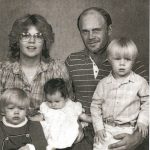 same girl was pregnant again. She offered Brian and Lisa that baby too. Their daughter, Angel Danell was born June 12, 1995. God’s plans never have mistakes in them. He wanted these two girls to have each other…and a great family. In 1996, God changed their lives again when their children’s cousin became pregnant, and couldn’t keep the baby at the time, and since she was enrolled in the tribe, family had the option to adopt first because the Native Americans prefer to keep a child close, but God made a way for Brian and Lisa, and their son Noah Richard was born August 4, 1997. At this point, Brian and Lisa thought their family was probably complete, but as they were learning, God had a different plan. A woman they met at their church had just come back from working in an orphanage in China. While there, she fell in love with a little girl called Precious. Brian and Lisa quickly fell in love too, and they felt that God was calling them to adopt Precious. Again, they would learn that God’s plans are sometimes different than ours. The adoption of Precious did not work out, but there was another child…a baby girl who needed a family. Brian and Lisa raised the $30,000 plus dollars to go to China and pick up that 6 month old baby. Their daughter Hope Elizabeth was born on September 23rd, 2001.
same girl was pregnant again. She offered Brian and Lisa that baby too. Their daughter, Angel Danell was born June 12, 1995. God’s plans never have mistakes in them. He wanted these two girls to have each other…and a great family. In 1996, God changed their lives again when their children’s cousin became pregnant, and couldn’t keep the baby at the time, and since she was enrolled in the tribe, family had the option to adopt first because the Native Americans prefer to keep a child close, but God made a way for Brian and Lisa, and their son Noah Richard was born August 4, 1997. At this point, Brian and Lisa thought their family was probably complete, but as they were learning, God had a different plan. A woman they met at their church had just come back from working in an orphanage in China. While there, she fell in love with a little girl called Precious. Brian and Lisa quickly fell in love too, and they felt that God was calling them to adopt Precious. Again, they would learn that God’s plans are sometimes different than ours. The adoption of Precious did not work out, but there was another child…a baby girl who needed a family. Brian and Lisa raised the $30,000 plus dollars to go to China and pick up that 6 month old baby. Their daughter Hope Elizabeth was born on September 23rd, 2001.
It was at this point that Brian and Lisa knew that their family was complete…at least until the grandchildren began to arrive. They marveled at the blessings God had given them. Their story doesn’t end here though. There were reasons that each of these precious adopted daughters were given their names. Grace received her name because they felt like, in a time just after Lisa’s dad’s passing God gave them Grace. Angel was just so sweet, they all kept calling her a little angel, and the name just stuck. Hope arrived at a time when Lisa felt like she had none and God gave her Hope to fill them all with Joy. As I was visiting with Brian and Lisa’s daughter, Elizabeth, in preparation for this story, she summed her parents up like this, “Pretty amazing…when I look back at what sacrifices that were made and the money, time, and love they have given all of us…well, God has been faithful to our family. If it weren’t for the color of our skin or eyes no one would know that were weren’t blood 
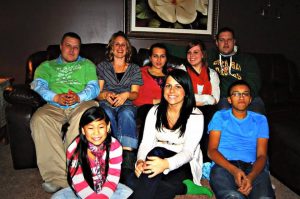 relatives. It’s like the adoption creed says that my parents have in their house ‘Not flesh of my flesh nor bone of my bone, but still miraculously my own. Never forget for a single minute, you didn’t grow from my heart, but in it.’ I like to brag on my parents because you won’t find a couple that has struggled more, had so many sleepless nights with their children trying to find their own and loving unconditionally and always keeping Jesus in the center.” That is such a beautiful tribute to a beautiful couple, from a loving daughter.
relatives. It’s like the adoption creed says that my parents have in their house ‘Not flesh of my flesh nor bone of my bone, but still miraculously my own. Never forget for a single minute, you didn’t grow from my heart, but in it.’ I like to brag on my parents because you won’t find a couple that has struggled more, had so many sleepless nights with their children trying to find their own and loving unconditionally and always keeping Jesus in the center.” That is such a beautiful tribute to a beautiful couple, from a loving daughter.
 My husband, Bob’s aunt, Esther Hein has always lived far away from the rest of the family, and I find that a little bit sad, because it means that we don’t get to see her very often. Being far away makes it hard on Esther too, because if anything is going on, she feels like she is completely disconnected. We try to keep her informed, but there is nothing quite like distance to make a person feel disconnected from a situation. I suppose that the phone calls, help…especially when she can talk to the person she was so worried about, but I know from experience, it is easier on the family to be in the waiting room of the hospital than a thousand miles away. Whenever Esther would came to Casper for a visit, it was always a big deal. It may not have been an official family reunion, but those mini family reunions are really nice too. It has been a number of
My husband, Bob’s aunt, Esther Hein has always lived far away from the rest of the family, and I find that a little bit sad, because it means that we don’t get to see her very often. Being far away makes it hard on Esther too, because if anything is going on, she feels like she is completely disconnected. We try to keep her informed, but there is nothing quite like distance to make a person feel disconnected from a situation. I suppose that the phone calls, help…especially when she can talk to the person she was so worried about, but I know from experience, it is easier on the family to be in the waiting room of the hospital than a thousand miles away. Whenever Esther would came to Casper for a visit, it was always a big deal. It may not have been an official family reunion, but those mini family reunions are really nice too. It has been a number of  years since Esther has been able to come for a visit, because of health concerns she has had, but I hope that someday soon she will be able to come for a visit again, because it really has been far too long since we saw her last.
years since Esther has been able to come for a visit, because of health concerns she has had, but I hope that someday soon she will be able to come for a visit again, because it really has been far too long since we saw her last.
Years ago, when she was a child, Esther’s family lived in the country, and during the hard winter months, when the weather in Montana was as harsh and unpredictable as Wyoming’s weather seems to be this year, Esther was sent to stay with her big brother, Walt Schulenberg’s family during the school year, to ensure that she was able to make it to school each day. As a little girl, I suppose living in town with her  brother’s family seemed as far away from her parents, as the distance she is away from family now seems…especially for a little girl. Nevertheless, I’m sure it also seemed a little bit like a great adventure to her.
brother’s family seemed as far away from her parents, as the distance she is away from family now seems…especially for a little girl. Nevertheless, I’m sure it also seemed a little bit like a great adventure to her.
Esther has always been a crafty person. She makes quilts, curtains, and other sewing crafts. She is also an artist, and has painted everything from canvas to saw blades. Her favorite things to paint are landscapes, and that is cool, because that is my favorite paintings too. And were it not for Esther, my husband’s hair would look awful most of the time, because it was Esther who showed me how to cut it right…thankfully!! Today is Esther’s 76th birthday. Happy birthday Esther!! Have a great day!! We love you!!
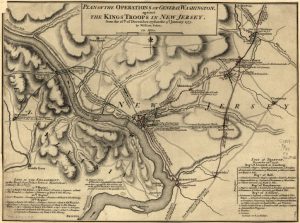 The year was 1776, and it was Christmas Day, but for the men with George Washington, it was not a day of celebration…not exactly anyway. They were in the middle of fighting a war, and the fighting didn’t just stop because it was Christmas, not this year anyway. This was to be an unusual Christmas as far as wartime Christmases went. In 1776, it was difficult to fight a war in the wintertime, because the slower modes of travel. Most times in a war, the armies took the Winter off from warring, but this army was not laying up for the Winter. This war would continue on…no matter what the weather was like.
The year was 1776, and it was Christmas Day, but for the men with George Washington, it was not a day of celebration…not exactly anyway. They were in the middle of fighting a war, and the fighting didn’t just stop because it was Christmas, not this year anyway. This was to be an unusual Christmas as far as wartime Christmases went. In 1776, it was difficult to fight a war in the wintertime, because the slower modes of travel. Most times in a war, the armies took the Winter off from warring, but this army was not laying up for the Winter. This war would continue on…no matter what the weather was like.
Things looked bad that year. The Continental Army had suffered a series of defeats in their battle against the British oppression. After some successful maneuvers, Colonel Henry Knox came to the attention of General George Washington who worked to place him in overall command to the Continental Army. Under his command, the Continentals brought 18 cannon over the river…3 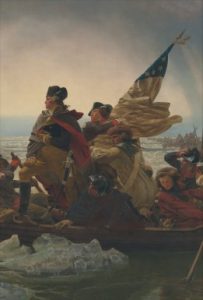 Pounders, 4 Pounders, some 6 Pounders, horses to pull the carriages, and enough ammunition for the coming battle. The 6 Pounders, weighing as much as 1,750 pounds were the most difficult to transport to the far side of the river. But in the end all the trouble of moving this large artillery train to Trenton proved its worth. Knox would place the bulk of his artillery at the top of the town where its fire commanded the center of Trenton.
Pounders, 4 Pounders, some 6 Pounders, horses to pull the carriages, and enough ammunition for the coming battle. The 6 Pounders, weighing as much as 1,750 pounds were the most difficult to transport to the far side of the river. But in the end all the trouble of moving this large artillery train to Trenton proved its worth. Knox would place the bulk of his artillery at the top of the town where its fire commanded the center of Trenton.
The plan devised by Knox and Washington was to conduct a surprise attack upon a Hessian garrison of roughly 1,400 soldiers located in and around Trenton, New Jersey. Washington hoped that a quick victory at Trenton would bolster sagging morale in his army and encourage more men to join the ranks of the Continentals in the coming new year. After several councils of war, General George Washington set the date for the river crossing for Christmas night 1776. It was an unprecedented plan, because the expectation was always that the armies would hold up somewhere for the winter. No one had attacked in winter before, and especially on Christmas. George Washington led 2,400 troops on a daring nighttime crossing of the icy Delaware River. Stealing into New Jersey, on December 26 the Continental forces launched the surprise attack on Trenton.
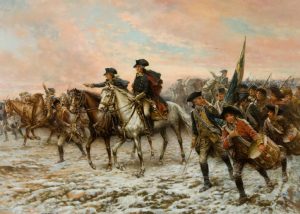 The gamble paid off. Many of the Hessians were still disoriented from the previous night’s holiday bender, and colonial forces defeated them with minimal bloodshed. While Washington had pulled off a shock victory, his army was unequipped to hold the city and he was forced to re-cross the Delaware that same day…with nearly 1,000 Hessian prisoners in tow. Washington would go on to score successive victories at the Battles of the Assunpink Creek and Princeton, and his audacious crossing of the frozen Delaware served as a crucial rallying cry for the beleaguered Continental Army. The Revolutionary War would be won by the Continental Army of course, and the rules of warfare changed forever.
The gamble paid off. Many of the Hessians were still disoriented from the previous night’s holiday bender, and colonial forces defeated them with minimal bloodshed. While Washington had pulled off a shock victory, his army was unequipped to hold the city and he was forced to re-cross the Delaware that same day…with nearly 1,000 Hessian prisoners in tow. Washington would go on to score successive victories at the Battles of the Assunpink Creek and Princeton, and his audacious crossing of the frozen Delaware served as a crucial rallying cry for the beleaguered Continental Army. The Revolutionary War would be won by the Continental Army of course, and the rules of warfare changed forever.

 As I was contemplating the Christmas Day activities to come, my mind wandered back to Christmases of my past. As a child, I remember waking up very early, with struck orders not to go out into the living room until our parents were awake. It seemed like a lifetime before they woke up. It wasn’t, of course, but in my youthful mind, it felt that way nevertheless. Christmas was a day to stay home. After the presents were opened, the cooking began. Of course, the turkey had been cooking for a while by then…another sign that Mom and Dad weren’t really still sleeping when we were trying to wake them up. My sisters and I had the rest of the morning to play with our new toys, and help out in the kitchen. It didn’t matter if it was snowing outside or not, because we had no place to go…the day was ours. I miss those carefree, slowed down, stay-at-home Christmases sometimes.
As I was contemplating the Christmas Day activities to come, my mind wandered back to Christmases of my past. As a child, I remember waking up very early, with struck orders not to go out into the living room until our parents were awake. It seemed like a lifetime before they woke up. It wasn’t, of course, but in my youthful mind, it felt that way nevertheless. Christmas was a day to stay home. After the presents were opened, the cooking began. Of course, the turkey had been cooking for a while by then…another sign that Mom and Dad weren’t really still sleeping when we were trying to wake them up. My sisters and I had the rest of the morning to play with our new toys, and help out in the kitchen. It didn’t matter if it was snowing outside or not, because we had no place to go…the day was ours. I miss those carefree, slowed down, stay-at-home Christmases sometimes.
When I got married, there were suddenly two families to spend Christmas…and every other holiday, with. Things got hectic very fast. We found ourselves running from one house to the other in celebration of the day. Yes, there was plenty of stress, but there really was celebration too, because Christmas is a day of celebration, both in the spiritual and secular versions. Families worked together to make for an easy transition from one house to the other, even though each one wished they could have had a little bit more time with us. Finally, at the end of a very long day, wonderful as it was, we dragged ourselves back home, and figured that there was always tomorrow to stay home and let the kids play with all of their new things.
When our girls got married a whole new facet was added to the Christmas/holiday mix. Not only was there still 
 my family and Bob’s, but now we had Kevin’s and Travis’ families. The holidays became almost chaotic. Still, it was about family, and that was what mattered. Our families, their families, one big happy family. What I learned from this time spent reminiscing is that whatever Christmas or the other holidays are to your family, that is the thing that matters, because after the real reason for the Christmas season…the birth of our Lord and Saviour, Jesus Christ…family is the next thing in the line of the most important things in life. Merry Christmas to all of my dear family, and everyone everywhere.
my family and Bob’s, but now we had Kevin’s and Travis’ families. The holidays became almost chaotic. Still, it was about family, and that was what mattered. Our families, their families, one big happy family. What I learned from this time spent reminiscing is that whatever Christmas or the other holidays are to your family, that is the thing that matters, because after the real reason for the Christmas season…the birth of our Lord and Saviour, Jesus Christ…family is the next thing in the line of the most important things in life. Merry Christmas to all of my dear family, and everyone everywhere.
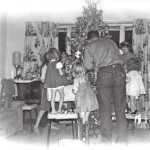
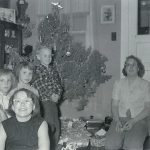 Christmas Eve is a day full of tradition. Maybe not as much tradition as Christmas Day, but tradition nevertheless. For some people, the Christmas gifts are opened on that day, and for others, maybe just one gift is opened. It is the start of the Christmas holiday. When we think of the birth of Christ, we also think of nighttime. Maybe that is why Christmas eve is more special to us…whether we realize it or not. For Christians, Christmas is one of the special days, because it represents the day that hope arrived on the Earth again. Before that, there was no hope, whether the people knew it or not.
Christmas Eve is a day full of tradition. Maybe not as much tradition as Christmas Day, but tradition nevertheless. For some people, the Christmas gifts are opened on that day, and for others, maybe just one gift is opened. It is the start of the Christmas holiday. When we think of the birth of Christ, we also think of nighttime. Maybe that is why Christmas eve is more special to us…whether we realize it or not. For Christians, Christmas is one of the special days, because it represents the day that hope arrived on the Earth again. Before that, there was no hope, whether the people knew it or not.
For my grandparents, George and Harriet Byer, and my cousins, Raylynn and Doug Williams, it is a day to remember their wedding day, in addition to our Lord’s birth of course. In years gone by, people got married at times when the family could easily get together. I’m sure that is why Grandma and Grandpa chose that day. 
 For Raylynn and Doug, it seemed the perfect day, because of Grandma and Grandpa. I know that any day that a wedding takes place is special, but in our family, the Christmas Eve wedding is a very special one. It was what started the family.
For Raylynn and Doug, it seemed the perfect day, because of Grandma and Grandpa. I know that any day that a wedding takes place is special, but in our family, the Christmas Eve wedding is a very special one. It was what started the family.
Christmas Eve at my house, when I was growing up, meant singing Christmas carols and eating goodies, listening to Christmas music and watching Christmas movies. We got to open a gift too, and it was always pajamas. We knew it would be, but that was ok. We knew there would be pictures in the morning opening the gifts, and wearing those pajamas, all crisp and new, just made is Christmas somehow. In fact, I don’t think it would have been Christmas in my mind, without those new pajamas. I really miss my parents, Collene and Al Spencer at Christmastime.

 For most of us, there is some celebration on Christmas Eve. For my husband, Bob’s family, Christmas Eve meant Chili, and later the addition of Lasagna, and his mom, Joann Schulenberg’s homemade cinnamon rolls. Then they opened the gifts, and the kids had a great evening. Since my father-in-law, Walt Schulenberg’s passing, we have tried to continue that tradition, but we hadn’t had the cinnamon rolls, but my sister-in-law, Brenda wanted that tradition back. So, while they will not be like her mom’s cinnamon rolls, we will have them. Merry Christmas Eve everyone.
For most of us, there is some celebration on Christmas Eve. For my husband, Bob’s family, Christmas Eve meant Chili, and later the addition of Lasagna, and his mom, Joann Schulenberg’s homemade cinnamon rolls. Then they opened the gifts, and the kids had a great evening. Since my father-in-law, Walt Schulenberg’s passing, we have tried to continue that tradition, but we hadn’t had the cinnamon rolls, but my sister-in-law, Brenda wanted that tradition back. So, while they will not be like her mom’s cinnamon rolls, we will have them. Merry Christmas Eve everyone.
 Imagine living in a country where you could only go places and do things that the government allowed you to. Communist countries are that way, but in East Berlin things had taken a much more sinister turn. Throughout the 1950s and into the early 1960s, thousands of people from East Berlin crossed over into West Berlin to reunite with families and escape communist repression. The Soviet Union had rejected East Germany’s original request to build the wall in 1953, but with defections through West Berlin reaching 1,000 people a day by the summer of 1961, Soviet leader Nikita Khrushchev finally relented. The residents of Berlin awoke on the morning of August 13, 1961, to find barbed wire fencing had been installed on the border between the city’s east and west sections. Days later, East Germany began to fortify the barrier with concrete. Construction began on August 12, 1961. The Berlin Wall was actually two walls. The 27 mile portion of the barrier separating Berlin into east and west consisted of two concrete walls between which was a “death strip” up to 160 yards wide that contained hundreds of watchtowers, miles of anti-vehicle trenches, guard dog runs, floodlights and trip-wire machine guns. Overnight, people who had family on the other side of Berlin were no longer able to see them. There was no recourse, and no warning. At first people could see their loved ones across the fence, but when the walls went up that ended too.
Imagine living in a country where you could only go places and do things that the government allowed you to. Communist countries are that way, but in East Berlin things had taken a much more sinister turn. Throughout the 1950s and into the early 1960s, thousands of people from East Berlin crossed over into West Berlin to reunite with families and escape communist repression. The Soviet Union had rejected East Germany’s original request to build the wall in 1953, but with defections through West Berlin reaching 1,000 people a day by the summer of 1961, Soviet leader Nikita Khrushchev finally relented. The residents of Berlin awoke on the morning of August 13, 1961, to find barbed wire fencing had been installed on the border between the city’s east and west sections. Days later, East Germany began to fortify the barrier with concrete. Construction began on August 12, 1961. The Berlin Wall was actually two walls. The 27 mile portion of the barrier separating Berlin into east and west consisted of two concrete walls between which was a “death strip” up to 160 yards wide that contained hundreds of watchtowers, miles of anti-vehicle trenches, guard dog runs, floodlights and trip-wire machine guns. Overnight, people who had family on the other side of Berlin were no longer able to see them. There was no recourse, and no warning. At first people could see their loved ones across the fence, but when the walls went up that ended too.
For almost 2½ years those on one side of the wall were lost to those on the other side of the wall. What the Communist regime didn’t anticipate was the fact that people would still find a way to escape. There were 39 deaths at the Berlin Wall between 1961 and 1963, and a total of 139 between 1961 and the wall’s demolition in 1989. That might not seem like so many, but when you take into account the fact that the people inside East Berlin were so closely watched, that it was almost impossible to get to supplies they needed to plan and carry out their escape attempt. Nevertheless, some people did make it safely across. No one knows for sure exactly how many people reached the western part, but some estimates claim that 5,000 East Germans reached West Berlin via the Wall. Men, women and children snuck through checkpoints, hid in vehicles and tunneled under  the concrete. They used hot air balloons, diverted the train, crossed the river on an air mattress, by swimming, and even by zip line and tight rope. These people really wanted their freedom.
the concrete. They used hot air balloons, diverted the train, crossed the river on an air mattress, by swimming, and even by zip line and tight rope. These people really wanted their freedom.
Finally, on December 20th through 26th or 1963, the Communist regime decided that if they issued 1 day passes to those in West Berlin, maybe it would stop the escape attempts. The East Berliners were not allowed to leave, but the West Berliners could come in and see friends and family members. I can only imagine how the people from West Berlin felt. They wanted to go and see their friends and family, but would they be allowed back out, or was this just a trap? Nevertheless, it was Christmastime, and it had been so long since they had seen them. So, nearly 4,000 West Berliners crossed into East Berlin to visit their relatives. It was all part of an agreement reached between East and West Berlin, over 170,000 passes were eventually issued to West Berlin citizens, each pass allowing a one day visit to communist East Berlin for the Christmas (Passierscheinregelung) season that year.
The day was one filled with moments of poignancy and propaganda. Tears, laughter, and other outpourings of emotions characterized the reunions that took place as mothers and fathers, sons and daughters met again. They were so happy, if only for a short time. Cold War tensions were mixed in too, however. Loudspeakers in East Berlin inundated visitors with the news that they were now in “the capital of the German Democratic Republic,” a political division that most West Germans refused to accept. Visitors were also given a brochure that explained that the wall was built to “protect our borders against the hostile attacks of the imperialists.” They were told of how the decadent western culture, including “Western movies” and “gangster stories,” were flooding into East Germany before the wall sealed off such dangerous trends, and that made it “necessary” to build the wall. West Berlin newspapers berated the visitors for being “pawns” of East German propaganda. Editorials argued that the communists would use these visits to gain West German acceptance of a permanent division of Germany. The visits, and the high-powered rhetoric that surrounded them, reminded everyone that the Cold  War involved very human, often quite heated, emotions. East Berlin allowed these similar and very limited arrangements in 1964, 1965 and 1966. In 1971, with the Four Power Agreement on Berlin, agreements were finally reached to allow West Berliners to apply for visas to enter East Berlin and East Germany regularly, however, East German authorities could still refuse to honor the entry permits. Finally in 1989, at President Ronald Reagan’s insistence, the Berlin Wall came down, and this inhumane treatment of the East German people ended.
War involved very human, often quite heated, emotions. East Berlin allowed these similar and very limited arrangements in 1964, 1965 and 1966. In 1971, with the Four Power Agreement on Berlin, agreements were finally reached to allow West Berliners to apply for visas to enter East Berlin and East Germany regularly, however, East German authorities could still refuse to honor the entry permits. Finally in 1989, at President Ronald Reagan’s insistence, the Berlin Wall came down, and this inhumane treatment of the East German people ended.
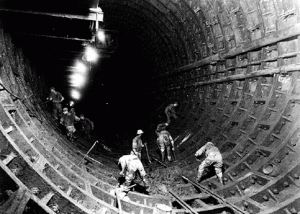 Living in New Jersey, does not necessarily mean that people work or shop in New Jersey. Since Manhattan is just across the Hudson River, many people work and shop there…who wouldn’t, given the chance. I suppose that at some point it was decided that there might soon be too many bridges over the river, and maybe a tunnel under it could be built. The first known underwater tunnel to be built was the Thames Tunnel, built beneath the River Thames in London, connecting Rotherhithe and Wapping. It was built between 1825 and 1843 using Marc Isambard Brunel’s and Thomas Cochrane’s newly invented tunneling shield technology, by Brunel and his son Isambard Kingdom Brunel. So the idea was not new, and in fact, not even new to New York City. The Port Authority had acquired the Holland Tunnel in 1930, and soon after New York and New Jersey authorized the agency to proceed with its plan to build what was then called the Midtown Hudson Tunnel or the Midtown Vehicular Tunnel. Creating a 1.5-mile-long structure, even above ground, would be no small accomplishment, but to build it under a riverbed was a monumental task. Hundreds of huge iron rings, each weighing 21 tons, had to be assembled and bolstered together on site to form the lining of the tunnel. At some point it was decided that Midtown Vehicular Tunnel was not grand enough…so in the spirit of patriotism they named it the Lincoln Tunnel, because of the George Washington Bridge. On this day, December 22, 1937 the 8,216 foot center tube opened in 1937, followed by the 7,482 foot north tube in 1945. The 8,006 foot south tube was the last to open, in 1957.
Living in New Jersey, does not necessarily mean that people work or shop in New Jersey. Since Manhattan is just across the Hudson River, many people work and shop there…who wouldn’t, given the chance. I suppose that at some point it was decided that there might soon be too many bridges over the river, and maybe a tunnel under it could be built. The first known underwater tunnel to be built was the Thames Tunnel, built beneath the River Thames in London, connecting Rotherhithe and Wapping. It was built between 1825 and 1843 using Marc Isambard Brunel’s and Thomas Cochrane’s newly invented tunneling shield technology, by Brunel and his son Isambard Kingdom Brunel. So the idea was not new, and in fact, not even new to New York City. The Port Authority had acquired the Holland Tunnel in 1930, and soon after New York and New Jersey authorized the agency to proceed with its plan to build what was then called the Midtown Hudson Tunnel or the Midtown Vehicular Tunnel. Creating a 1.5-mile-long structure, even above ground, would be no small accomplishment, but to build it under a riverbed was a monumental task. Hundreds of huge iron rings, each weighing 21 tons, had to be assembled and bolstered together on site to form the lining of the tunnel. At some point it was decided that Midtown Vehicular Tunnel was not grand enough…so in the spirit of patriotism they named it the Lincoln Tunnel, because of the George Washington Bridge. On this day, December 22, 1937 the 8,216 foot center tube opened in 1937, followed by the 7,482 foot north tube in 1945. The 8,006 foot south tube was the last to open, in 1957.
On average, the Lincoln Tunnel sees upwards of 120,000 cars passing through every day. It is one of the busiest roadways in the country. On the afternoon of September 8, 1953, the tunnel became famous when two men, who had attempted to rob a house in South Orange New Jersey were chased away by its residents. Their car’s license plate was relayed to the police. Peter Simon and John Metcalf escaped into the Lincoln Tunnel and were spotted by transit authorities upon entering. A car chase ensued amid the traffic through the tunnel. Police commandeered a delivery truck and fired shots at the getaway car as it swerved around other vehicles. In all 28 shots were fired, and the driver, Peter Simon, was shot in the head about three quarters of the way to the other side of the tunnel. The gunfight was reported by The New York Times the next morning.
The Hudson River current has historically stayed close to the edge of Lower Manhattan, but with the construction of Battery Park City, which juts out into the river, part of the current has been rerouted. Its new location brings it more toward the river’s center and it’s uncovering much of the soil lying on top of the walls and ceiling of the Tunnel. As of 2009, some parts of the tunnel’s walls have seen a soil coverage decrease of about 25%, making them far more susceptible to shifting or cracking in the coming years. Not good!!
The process of building the 1.5 mile tunnel was grueling. To support the cavities that the workers dug out, they  installed a series of 21 ton iron rings set into the walls. The workers who dug the tunnels, called sandhogs, had to use a series of airlocks to depressurize and re-pressurize their bodies while entering a new section of the tunnel. With no ventilation, the air in each pressurized section got stale quickly. The excavation involved digging, lining the walls with the rings, pouring cement into every crease and crack to the keep the water out, and finally they moved along to the next airlock. Clifford Holland, chief engineer and namesake of the Holland Tunnel, died of a heart attack at 41 years of age due to immense stress during the construction, as well as the growing toxicity of the air in the airlocks. The Lincoln Tunnel faired better, with no reported work-related deaths.
installed a series of 21 ton iron rings set into the walls. The workers who dug the tunnels, called sandhogs, had to use a series of airlocks to depressurize and re-pressurize their bodies while entering a new section of the tunnel. With no ventilation, the air in each pressurized section got stale quickly. The excavation involved digging, lining the walls with the rings, pouring cement into every crease and crack to the keep the water out, and finally they moved along to the next airlock. Clifford Holland, chief engineer and namesake of the Holland Tunnel, died of a heart attack at 41 years of age due to immense stress during the construction, as well as the growing toxicity of the air in the airlocks. The Lincoln Tunnel faired better, with no reported work-related deaths.

